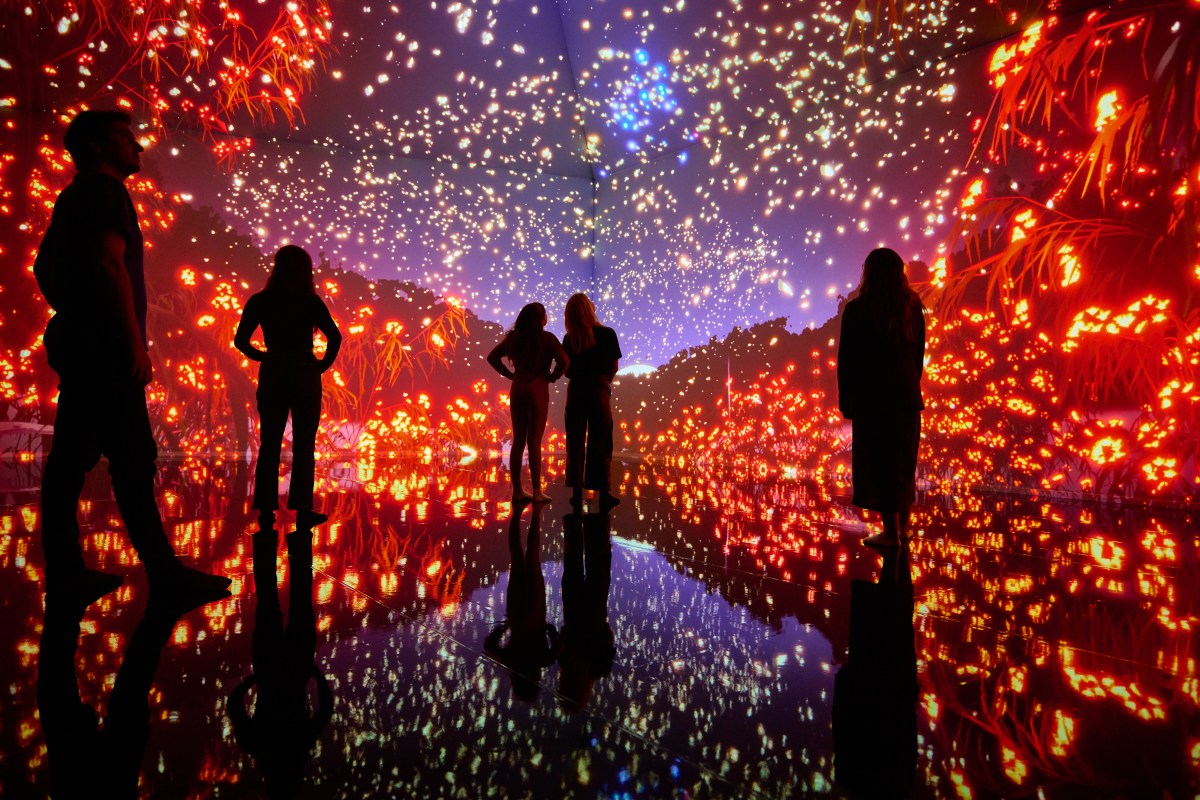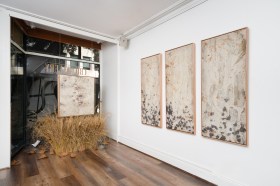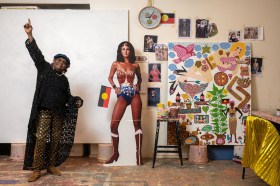The general consensus for 2022 was the arts were back. After a bitter couple of years of disruptions, the visual arts delivered an enormous year. It also happened to be a Federal Election year, and with the National Cultural Policy on the table, much of the sector was doing some deep thinking about priorities and where to direct advocacy efforts.
The word on the ground was that the rethink that the pandemic brought has been silently welcomed.
While the visual arts has largely ‘returned’, some learnings have been ‘sticky’, with hybrid art fairs proving to be a big win for the sector, and self-managed e-commerce platforms embraced by many artists and designers. There was also significant growth in the commercial gallery sector, continuing on from the pandemic, and the visual arts and museum sector welcomed a larger than usual addition of new spaces – particularly new regional galleries – into the fold this year.
In terms of trends across the visual arts, discussions around ethical sponsorship, climate concerns, burnout, staff leaving the sector – plus the embedding of First Nations’ voices and professionals in a holistic way for most visual arts organisations – have each played a significant role in shaping the sector this year. Together with a new Code of Practice for the sector, the future promises better professional practice and more inclusive foundations.
These were the big news tickets that stood out for the visual arts in 2022
Biggest in your face: Set to repel audiences, Australia went bold for Venice Biennale, ditching vernissage elitism and tote-bag marketing priorities, in favour of a durational sound installation by Marco Fusinato (Curator Alexie Glass-Kantor) – and the global arts media loved it!
Biggest policy: While the arts more broadly were in the grip of considerations for our first National Cultural Policy, for the visual arts it was a new Code of Practice for Visual, Craft and Design practitioners that was launched, after three years of consultation, by NAVA.
Read: Experts say our galleries and museums need to become greener
Biggest naming rights: While anyone visiting the new Sydney Modern and Wharf Arts Precinct will see the splattering of patrons’ names on anything that doesn’t move, it was a pledge of $100 million to the forthcoming NGV Contemporary by philanthropists Lindsay Fox AC and Paula Fox AO in April that saw the renaming of the institution to The Fox: NGV Contemporary. It is the largest cultural gift for a capital program ever made to an Australian art museum by a living donor.
Biggest belly punch: This would have to go to all the arts organisations from the Northern Rivers, which repeatedly faced devastating floods this year. The Lismore Regional Gallery was hard hit by waters, and while much of the collection was saved, the losses of equipment cut deeply.
Read: Navigating flood insurance: where to turn
Biggest thank you: In October, Powerhouse announced it had acquired the archive of the Australian Centre for Photography (ACP), which devolved in December 2020. Valued at approximately $1.6 million, the archive will take on a new name, Powerhouse Photography.
Big rethink: The ground-breaking peak organisation, Chamber of Arts and Culture WA, has ‘come to ground’ and faced an urgent review in September.
Best “unsung” show: While it was deservedly celebrated, Daniel Boyd’s exhibition Treasure Island at the Art Gallery of NSW was a thought-provoking engagement with our nation’s social history through the lens of a single artist’s oeuvre. It is the show that should have made all the headlines this year.
Biggest unveil: Speaking of AGNSW, the biggest unveiling – and party – goes to Sydney Modern, which threw opens its doors in December. While the party got rave reviews, the responses to the building itself have been mixed. Largely, the balance of exhibition space to vast open ‘starchitecture’ is a little off – but time will tell as the gallery settles into its skin.
Biggest themed show: Using the gum tree as a platform to chart the course of history and ‘hang the economic aspirations of a nation’ upon, Eucalyptusdom offered a fresh and exciting narrative at Powerhouse Museum in this stunning collection show this year, which also included 17 newly commissioned works across design, architecture, film, applied arts and performance.
Biggest private gift: Despite the pandemic knocking many for a spin, there were some hefty gifts and pledges made in 2022. In November, Elias Jreissati AM KJGC, Chairman of Bensons Property Group, donated $1 million to Gold Coast’s Home of the Arts (HOTA), while earlier in the year (June), Wendy Whiteley disclosed details of her bequest to the Art Gallery of NSW: her Lavender Bay home will be sold after her death, and her collection of Brett Whiteley artworks – ‘valued’ at $100 million – will go to the gallery.
In May, a landmark bequest of $35 million by The Josephine Ulrick and Win Schubert Charitable Trust was announced by the Queensland Art Gallery/Gallery of Modern Art (QAGOMA), with inaugural acquisitions by artists Olafur Eliasson, Tacita Dean and Fiona Hall.
And across the pond, the Auckland Art Gallery is the recipient of Tiger Management founder, Julian Robertson’s $181 million art collection. The billionaire died this year, having promised the bequest in 2009, meaning that 15 masterpieces by artists including Pablo Picasso, Salvador Dalí and Henri Matisse are all heading to New Zealand.
Big shortfall: From big bucks to big shortfalls – in the closing gasps of the working year, news broke that the National Gallery of Australia could be facing a $265 million shortfall over the next 10 years. The gallery’s Chair Ryan Stokes has appealed to the Federal Minister to top up the operating coffers. This will be a topic ArtsHub will have a close eye on in the new year.
Big gender move: In 2022 we saw the roll-out of the National Gallery’s first Gender Equity Action Plan in March, setting new standards. It was the first by a major public visual arts-collecting institution in Australia.
Later in the year we saw that rebalancing going further with the announcement that next year’s edition of The National – the Sydney-based multi venue exhibition – will be led by an all-female curatorial team offering their lens on Australian art now.
Biggest vandalism: While the year started with a senseless arson attack on the Museum of Australian Democracy (MoAD), destroying heritage elements of the building, it was a later trend that started overseas – and made its way to Australia in October – that appalled arts professionals and art lovers alike this year.
Two activists from Extinction Rebellion targeted Pablo Picasso’s Massacre in Korea (1951) gluing their hands to the painting, which was showing at National Gallery of Victoria (NGV) as part of the blockbuster exhibition The Picasso Century.
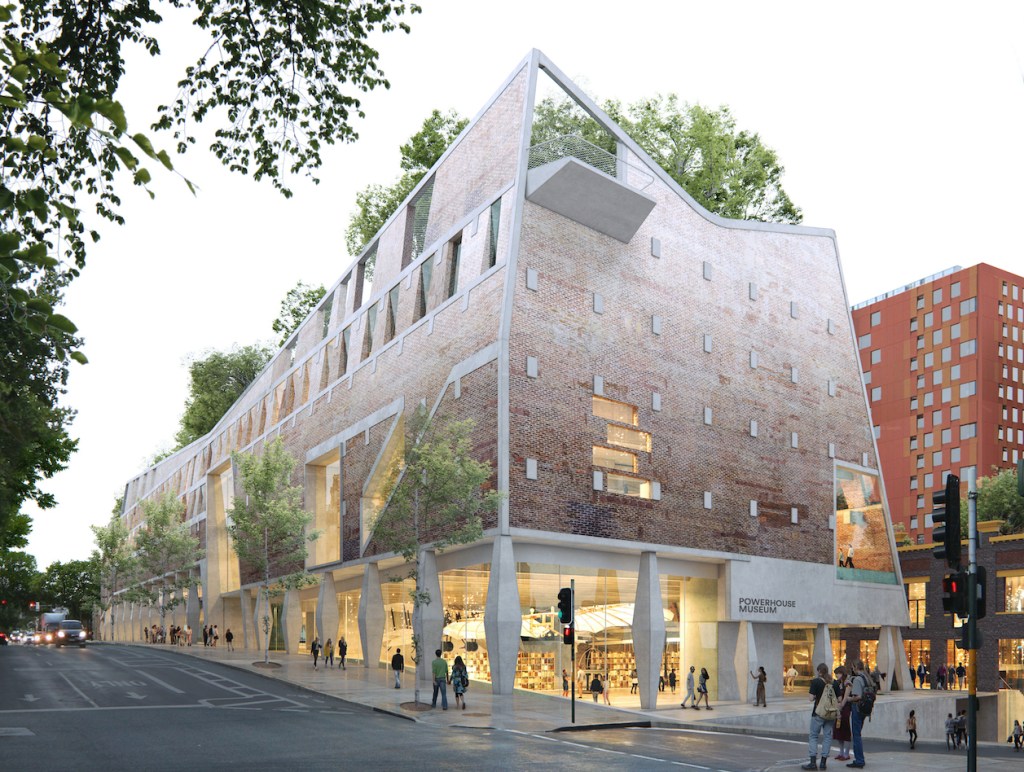
Biggest win for persistence: Few would argue that this goes to Powerhouse Ultimo, which revealed designs for its next chapter earlier this month, following a long battle to save – and then fund – the building.
A special nod also needs to go to Bega Valley Regional Gallery (BVRG), on the far south coast of NSW, which will open its new purpose-built contemporary art space this summer, rebranded as South East Centre for Contemporary Art (SECCA), after a protracted five-year battle.
Biggest scandal: It is not often that we get a story like this unfold in Australia, but in July, news that Wollongong Art Gallery donor Bob Šredersas was a Nazi hit the media. Needless to say, the gallery handled the news extremely well, sensitively working with Sydney Jewish Museum to build a more informed narrative around the collection.
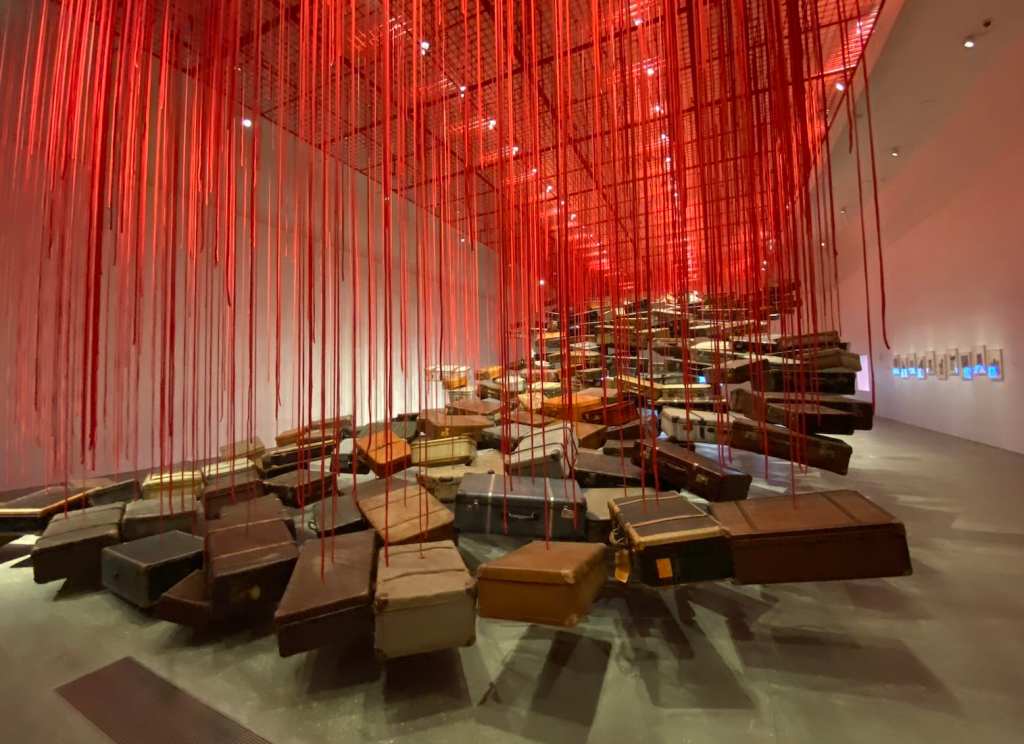
Biggest blockbuster: 2022 had a healthy share of major exhibitions, with Chiharu Shiota’s threads of humanity in The Soul Trembles offering an incredible visitor experience at the Gallery of Modern Art in Brisbane. In Sydney, Do Ho Suh equally shifted audience perspectives, moving between micro and macro detail with a solid overlay of nostalgia. While in Victoria, the National Gallery of Victoria (NGV) offered a refreshing take on the master, with The Picasso Century. The jury is out… they were all excellent visitor experiences and considered exhibitions.
Read: Your 2022-2023 summer exhibition planner
Biggest story of hope: After repeated funding knock-backs, the leniency of an art-hearted landlord and countless everyday art lovers… Cementa Festival bought a building to call its headquarters in the small NSW town of Kandos.
Biggest fashion moment: Undoubtedly, Alexander McQueen’s exhibition at NGV International, curated in partnership with Los Angeles County Museum of Art (LACMA). Any ‘costume historian or fashion follower will tell you that seeing so many of them together in one room is extremely rare,’ Associate Curator of Costume and Textiles at LACMA, Clarissa Esguerra told ArtsHub, plus with a red carpet Gala to rival the Met, this clearly was the hands-down fashion gallery moment for 2022.
Also worthy of a nod were Gabrielle Chanel. Fashion Manifesto – another exclusive to NGV International – and Zampatti Powerhouse, at Powerhouse Ultimo.
Big rebrand: Taking Sydney out of the picture, the merging of Sydney Living Museums with the NSW State Archives as the new Museum of History NSW is a rebrand that got it right this year.
Biggest trending topic: There were two persistent topics across the visual arts this year – climate change and greenwashing. While there were dozens of exhibitions that tackled the peril of our shifting climate (especially in a year of floods), a special commendation has to go to the 100 Climate Conversations project by the Powerhouse, and also to José Roca’s delivery of the Biennale of Sydney with the theme Rivus (River).
Read: Reflecting on a smashing year of glass
Biggest resource: There were two exceptional resource/toolkits that were released this year for the sector to download free of charge. While the Work Well Guide, developed by the Arts Wellbeing Collective to improve mental health in the performing arts, can be used across sectors, it was a new Public Art Toolkit – produced by Create NSW and outlining best practice in policy, commissioning, construction and engagement with artists – that is a great gift to the sector.
Big First Nations: 2022 was a year that saw many institutions instigating Reconciliation Action Plans – with Queensland Art Gallery | Gallery of Modern Art (QAGOMA) among the first to launch in March and Powerhouse following, plus a commitment to instilling First Nations’ voices to board positions, and balancing staffing to ensure First Nations’ representation. They are welcomed changes that are gathering traction. Among some of the year’s highlights were:
- Ceremony, the Fourth Indigenous Triennial at the National Gallery of Australia, curated by Hetti Perkins.
- Araluen Art Centre announced in March that its signature exhibition Desert Mob will be handed over to the First Nations-led organisation, Desart.
- A major monument to First Nations people was unveiled on Sydney Harbour – a 6.4-metre high marble sculpture by Waanyi artist Judy Watson, sited above the Opera House and in front of Governor House.
- In November the numbers were in, and a record $4.33 million in Aboriginal and Torres Strait Islander art was sold at Darwin Aboriginal Art Fair, reconfirming that growth and demand continue.
- The Productivity Commission Report confirmed that Fake Art Harms First Nations Culture – a report that has been long in landing – and, despite its 300-page delivery, invites further sector feedback. The Fake Art Harms Campaign was launched in 2016. Almost six years to the day, we are still caught in the feedback stage.
- Tracks We Share: Contemporary Art of the Pilbara was a landmark exhibition presented at Art Gallery of Western Australia (AGWA) in collaboration with FORM and Aboriginal art centres across the state in a rare overview.
- The largest national gathering of First Nations arts and culture in 50 years was held in Adelaide in October – Purrumpa – marking the anniversary of the Australia Council’s Aboriginal and Torres Strait Islander Arts Board.
Biggest (not meant to be) secret: Formerly contour556, and rebranded as Canberra Art Biennial for its 4th edition in October, this cross-city sculpture event seems to be the best kept secret. Organised by Neil Hobbs, it keeps getting better, but we would love to see this stellar event amplified for the national awareness it deserves.
Biggest exchange: In May, the exhibition Ever Present: First People’s Art of Australia – the largest exhibition of Torres Strait Islander and Aboriginal art in Asia – opened at the National Gallery Singapore, in partnership with National Gallery of Australia and The Wesfarmers Collection of Australian Art.
Biggest queer: There seemed to be a strong queer lens across a lot of exhibition programming in 2022, but the most significant was Queer – a landmark, Australian-first exhibition that ‘rethought’ the NGV Collection through a queer lens. Featuring more than 300 artworks, it wins on scale alone.
Biggest museum moment: Ancient Greeks: Athletes, Warriors and Heroes was the highlight museum blockbuster for 2022, with more than 170 objects from the British Museum travelling to the National Museum of Australia, in Canberra.
Big solos: Over the last few years, we have seen a strong re-emergence of the solo/survey exhibition. This year’s crop included Peter Booth (TarraWarra Museum of Art), Jeffrey Smart (National Gallery of Australia), Barbara Hepworth (Heide Museum of Modern Art), Colin Lanceley (National Art School), Cressida Campbell (National Gallery of Australia), Gordon Hookey (IMA and UNSW Galleries), Luke Sciberras (Bathurst Regional Gallery and Campbelltown Arts Centre) and Vivienne Binns (Monash University Art Museum and the Museum of Contemporary Art Australia), among others.
Noticeably, a number of these were developed as collaborations across institutions – and I suspect we will see more of this. But taking the gong for the best solo this year has to go to Paul Yore (ACCA and Carriageworks), an artist who has battled incredible controversy and censorship across his career, but has remained true to his unique visual language – and didn’t we gain an immersive dose of it in Word Made Flesh!
Biggest appointment: MCA’s new Director Australian Suzanne Cotter returns to Sydney after 32 years abroad heading up institutions in Luxembourg, Portugal, New York, Oxford, London and Sharjah.
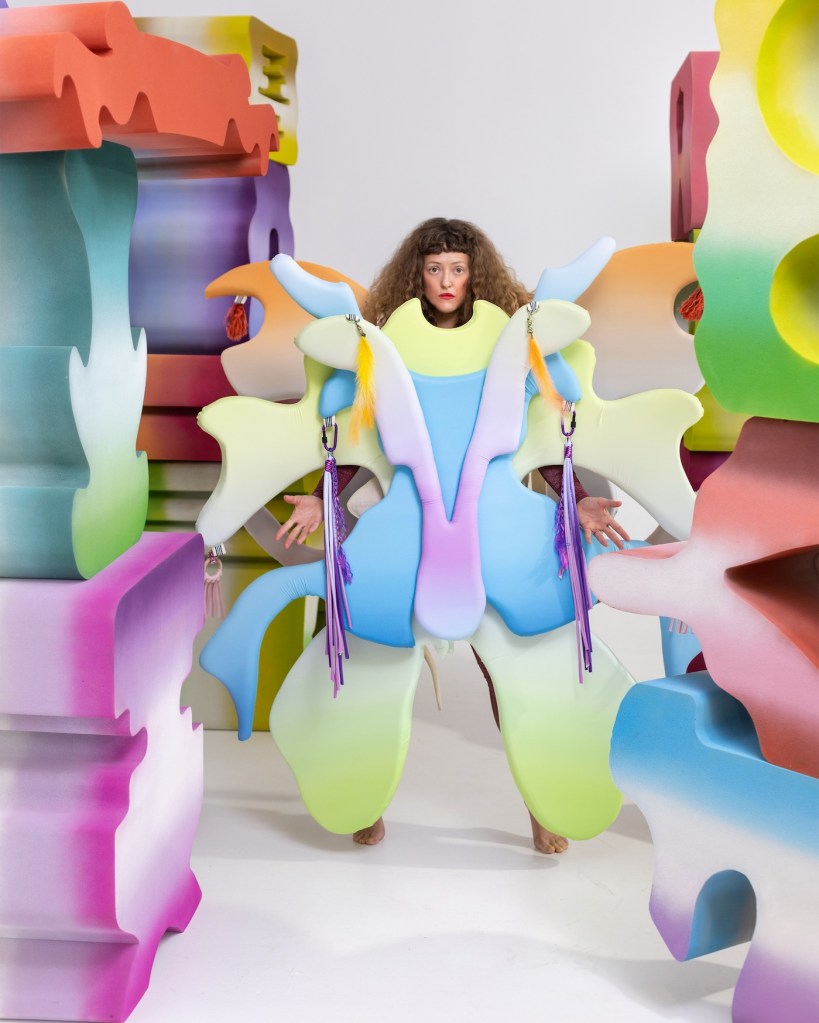
Big kids: Museum of Brisbane’s participatory exhibitions have become well-known, and its exhibition Play Moves has been a hit. However, it is a new venue at the Sydney Opera House – Centre for Creativity – and AGNSW’s newly opened Ashley Dawson-Damer Children’s Art Library that are great additions this year to shore up the future of the next generation of art enthusiasts.
Biggest international presence: While glass artist Kirstie Rea was celebrated in Japan, and photographer Hoda Afshar had a string of international shows, 2022 would have to be Yhonnie Scarce’s year, with a residency at Ikon Gallery in Birmingham in the UK, an exhibition at Palais de Tokyo in Paris, and being included in Aichi Triennale in Nagoya (Japan), the group exhibition On Caring, Repairing and Healing at Martin-Gropius-Bau in Berlin and UN/LEARNING AUSTRALIA at Seoul Museum of Art, among other projects.
Big craft nod: One of the most celebrated exhibitions this year was Clay Dynasty, which looked at the emergence of the functional pottery tradition and traced the journey to contemporary ceramics in Australia today.
Biggest first year: This is a hard call. Special mention has to go to Queensland’s newest regional gallery – also its largest – Rockhampton Museum of Art (RMOA), which opened its doors in February after a major rebrand, and a $36.5 million spend; and to Ngununggula in the Southern Highlands, which rolled out one of the most impressive inaugural exhibition programs, demonstrating that the regions rate! And for those of you still struggling with the name – “none-un-goo-lah”.
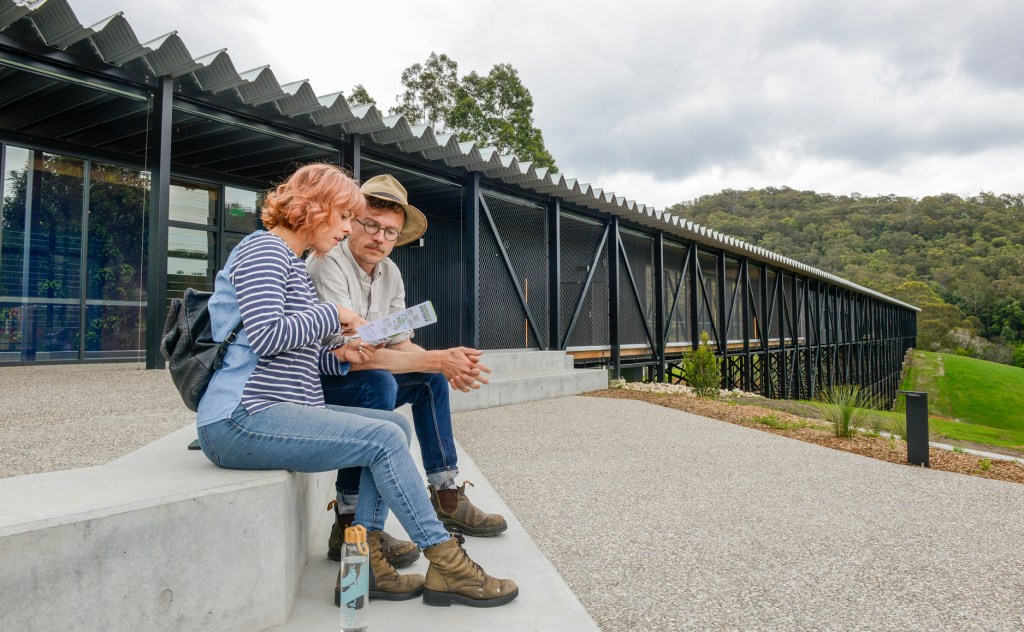
But the big nod has to go to Bundanon, which survived not only bush fires during its building, but floods during its inaugural year and yet managed to win prizes, wow a sector and offer a glowing future.
Read: 25 new galleries and theatres opening in 2022
Biggest anti-climax: Diffused by rolling launches, the lengthy redevelopment of Walsh Bay – as a major new, multimillion-dollar arts precinct along Sydney Harbour foreshore that has been years in the making (not to add disruptive) – just seemed to plod into existence in March without the fanfare its $371 million dollar-spend necessitated.
For the visual arts, that unveil happened with the use of Pier 2/3 for the Biennale of Sydney back in March. As media invited to do a walk-through, we were given merely a couple of days for an odd mid-week breakfast viewing.
Biggest pipeline dream: Lots of money – to the tune of $316.5 million – was announced in January to go towards a First Nations cultural precinct, including a National Resting Place in Canberra’s Parliamentary Triangle. Details remained very thin on the surface throughout the year, and with the Federal Election held in May and the National Cultural Policy and a Voice in Parliament taking the focus, one wonders if this will remain a paper pipe dream and expendable budget line.
Biggest tech immersion: The immersive digital experience has become a norm on the annual calendar. Leading experiences this year was the National Museum of Australia in Canberra, which delivered a world premiere with Grande Experiences’ latest multisensory exhibition – Connection – celebrating Indigenous Australia.
However, it was Melbourne Museum’s 360-degree responsive projections and soundscape – Tyama – that was the highlight for 2022, giving visitors the chance to discover senses beyond human perception.
Read: 15 new artspaces we suggest you visit
Biggest regional gong: While Bathurst Regional Gallery (NSW) needs to be congratulated for two massive exhibitions it delivered this year – Luke Sciberras’ Side of the Sky and Liam Benson’s Virtue Without Stain – Bendigo Art Gallery has again taken the gong for its ambitious collaboration with Gracelands, the home of Elvis, in Elvis: Direct from Graceland, an internationally exclusive exhibition of over 300 authentic artifacts.
Biggest facelift: Portraiture continues to be much loved across the visual arts sector, and that was especially so in 2022 with the exhibition Who Are You: Australian Portraiture – a collaboration between the NGV and the National Portrait Gallery, Canberra and then the exhibition FACELESS: Transforming Identity, at Cairns Art Gallery – both offering thought provoking rethinks of the role portraiture plays in forming our national identity.
Curious how the year stacks up?
The Big List: the visual arts in 2021
The Big List: the Visual Arts in 2020
The Big List: the Visual Arts in 2019
The Big List: what made an impact in the visual arts in 2018
